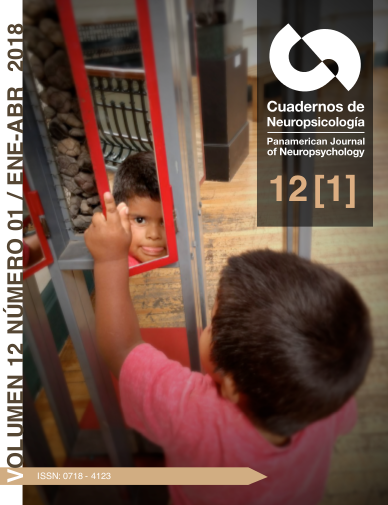Revisión sistemática de las medidas del Trastorno por Estrés Postraumático
Resumen
Resumen
El objetivo de este artÃculo es la revisión sistemática de las medidas del Trastorno por Estrés Postraumático (TEPT) prestando especial atención al fenómeno de la simulación. En una primera fase, se seleccionaron y analizaron 338 resúmenes de artÃculos empÃricos. A continuación, se seleccionaron 129 artÃculos, utilizando categorÃas ad hoc construidas a partir del análisis anterior. Junto a los artÃculos empÃricos que empleaban medidas del TEPT, se hallaron artÃculos dedicados a la validación de las pruebas psicométricas, la evaluación de los modelos de factores y la búsqueda de correlatos neurales. Las medidas del TEPT se han codificado en función de tipo de instrumentos (detección y evaluación del TEPT y simulación), pruebas psicométricas referentes a funciones cognitivas y pruebas psicométricas para la detección de la comorbilidad. Los resultados indican que muchas de las pruebas para la evaluación de TEPT se basan en autoinformes y entrevistas clÃnicas, facilitando la simulación.
Palabras clave: evaluación neuropsicológica; revisión sistemática; simulación; TEPT; test.
Â
Abstract
A systematic review was carried out with the objective of learning about PTSD measures, paying special attention to malingering. Firstly, 338 abstracts from empirical papers were selected and analyzed, and then 129 articles were selected by means of ad hoc categories that had been previously constructed. Apart from empirical papers using PTSD measures, we found papers devoted to psychometric validation of PTSD instruments, testing of factor models and neural correlates. PTSD measures were coded according type to of instrument (detection and assessment of PTSD and simulation), psychometric tests concerning cognitive functions, psychometric tests for the detection of comorbidity and neural correlates. Results indicate that many of the instruments for assessing PTSD consist of self-reports and clinical interviews, which facilitates malingering.
Key Words: malingering; neuropsychological assessment, PTSD; systematic review; testing
Resumo
O objetivo deste artigo é rever sistematicamente as medidas do transtorno de estresse pós-traumático (PTSD), dando especial atenção ao fenômeno da simulação. Em uma primeira fase, 338 resumos de artigos empÃricos foram selecionados e analisados. Então, foram selecionados 129 artigos, utilizando categorias ad hoc construÃdas a partir da análise anterior. Juntamente com os artigos empÃricos que utilizaram medidas de PTSD, foram encontrados artigos dedicados à validação de testes psicométricos, avaliação de modelos fatoriais e busca de correlatos neurais. As medidas de PTSD foram codificadas de acordo com o tipo de instrumentos (detecção e avaliação de PTSD e simulação), testes psicométricos referentes a funções cognitivas e testes psicométricos para a detecção de comorbidade. Os resultados indicam que muitos dos testes para a avaliação do TEPT são baseados em auto-relatos e entrevistas clÃnicas, facilitando a simulação.
Palavras-chave: avaliação neuropsicológica; revisão sistemática; simulação; PTSD; teste.
Descargas
Cómo citar
Número
Sección
Licencia
Los autores se responsabilizan de obtener el permiso preceptivo cuando deseen reproducir parte de material (figuras, etc.) procedente de otras publicaciones.
Del mismo modo CNPs permite que los autores alojen en sus sitios personales u otros repositorios que estimen convenientes La Versión Final y Definitiva del artículo publicado con el formato que la revista asigna. En ningún caso permitimos el acceso a preprint del artículo en evaluación o ya publicado.
Al momento de enviar un artículo a CNPs se toma conocimiento que todos los contenidos de CNPs se acogen a una Licencia Creative Commons. En donde se permite copiar y compartir libremente los contenidos haciendo siempre referencia al origen de la publicación y su autor.





